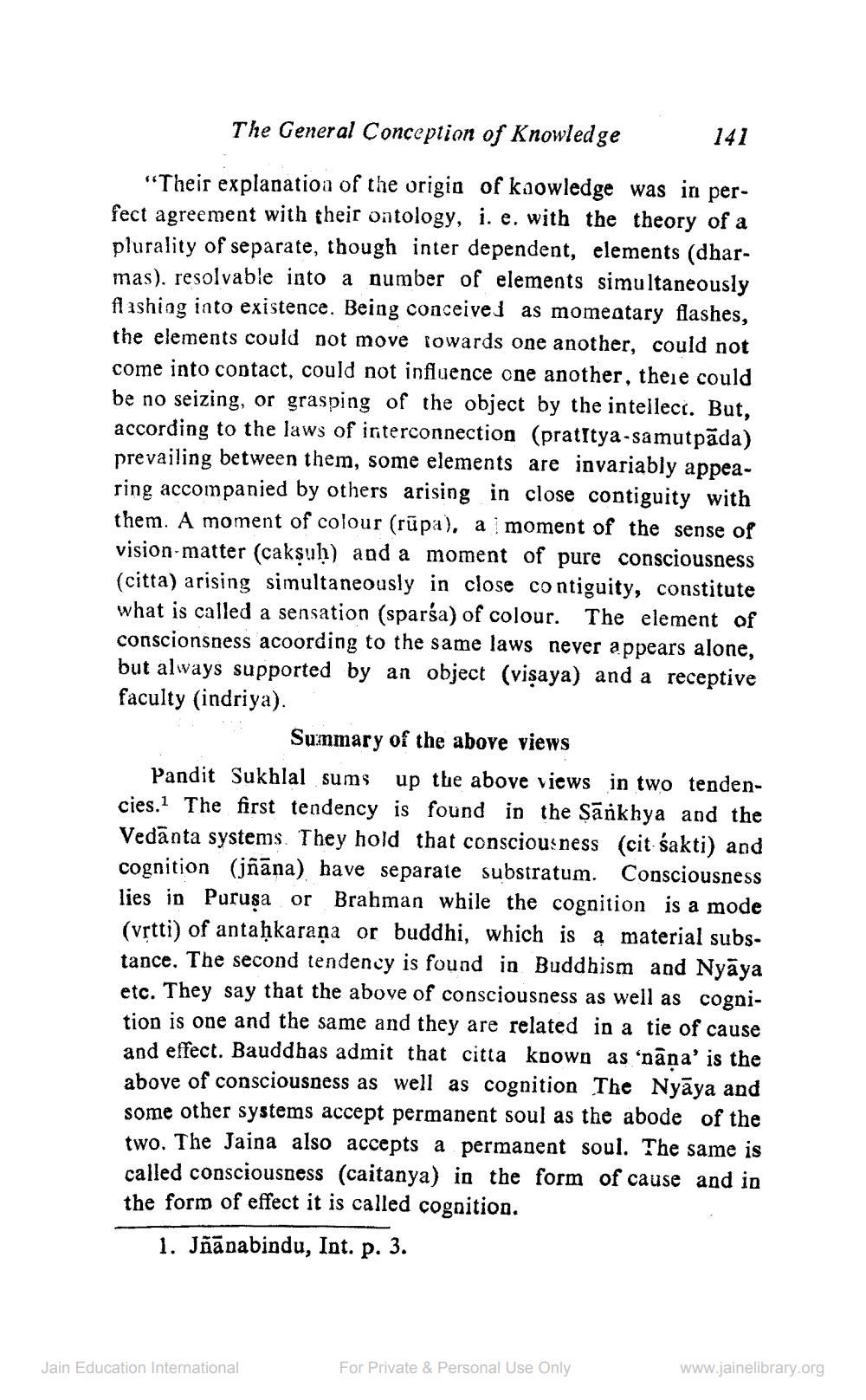________________
The General Conception of Knowledge
141
“Their explanatioa of the origin of kaowledge was in perfect agreement with their ontology, i. e. with the theory of a plurality of separate, though inter dependent, elements (dharmas), resolvable into a number of elements simultaneously flashing into existence. Being conceivei as momeatary flashes, the elements could not move towards one another, could not come into contact, could not influence one another, there could be no seizing, or grasping of the object by the intellect. But, according to the laws of interconnection (pratitya-samutpäda) prevailing between them, some elements are invariably appearing accompanied by others arising in close contiguity with them. A moment of colour (rūpa), ai moment of the sense of vision-matter (caksuh) and a moment of pure consciousness (citta) arising simultaneously in close contiguity, constitute what is called a sensation (sparśa) of colour. The element of conscionsness acoording to the same laws never appears alone, but always supported by an object (visaya) and a receptive faculty (indriya).
Summary of the above views Pandit Sukhlal sums up the above views in two tendencies. The first tendency is found in the Sārkhya and the Vedānta systems. They hold that consciousness (cit-sakti) and cognition (jñāna) have separate substratum. Consciousness lies in Purusa or Brahman while the cognition is a mode (vrtti) of antaḥkaraña or buddhi, which is a material substance. The second tendency is found in Buddhism and Nyaya etc. They say that the above of consciousness as well as cognition is one and the same and they are related in a tie of cause and effect. Bauddhas admit that citta known as 'nāna' is the above of consciousness as well as cognition The Nyāya and some other systems accept permanent soul as the abode of the two. The Jaina also accepts a permanent soul. The same is called consciousness (caitanya) in the form of cause and in the form of effect it is called cognition.
1. Jñānabindu, Int. p. 3.
Jain Education International
www.jainelibrary.org
For Private & Personal Use Only




